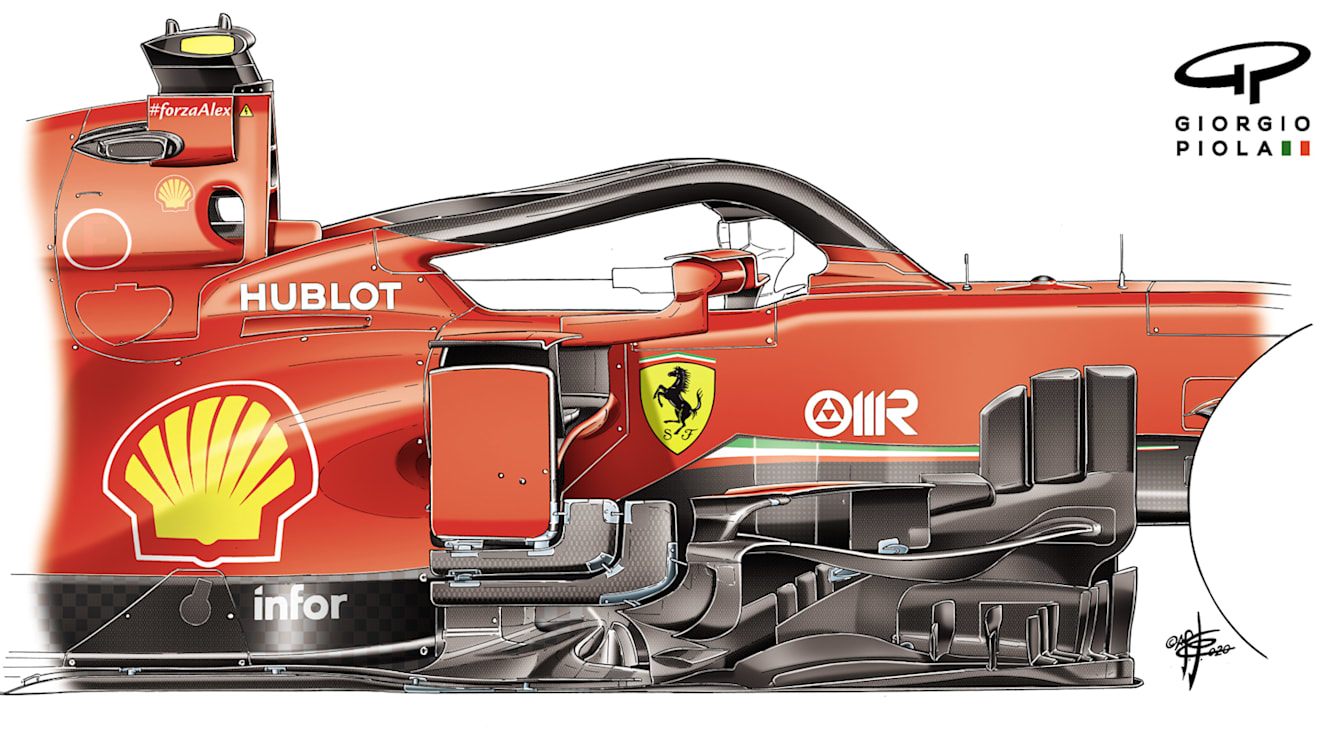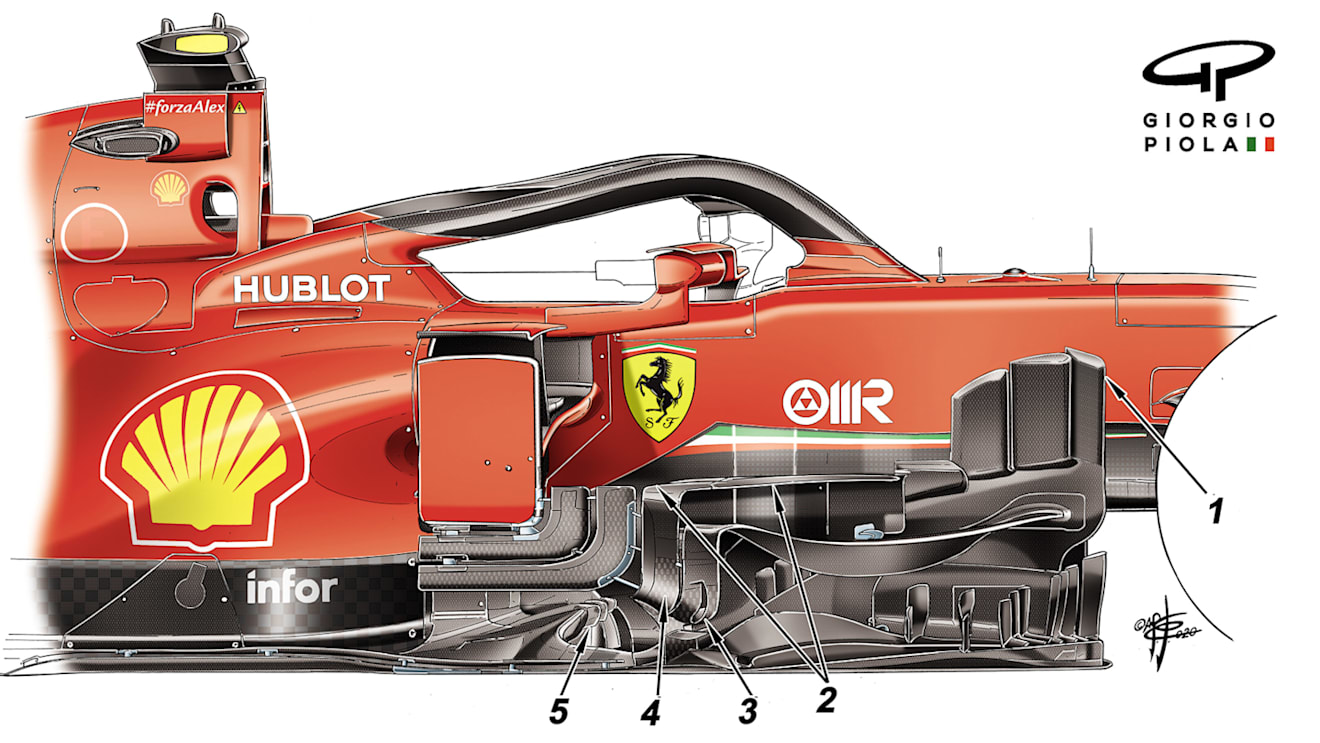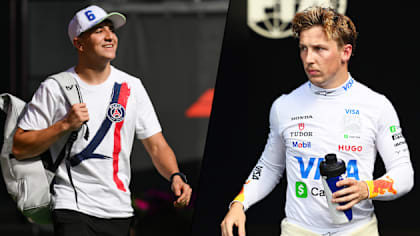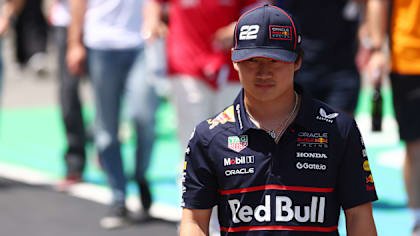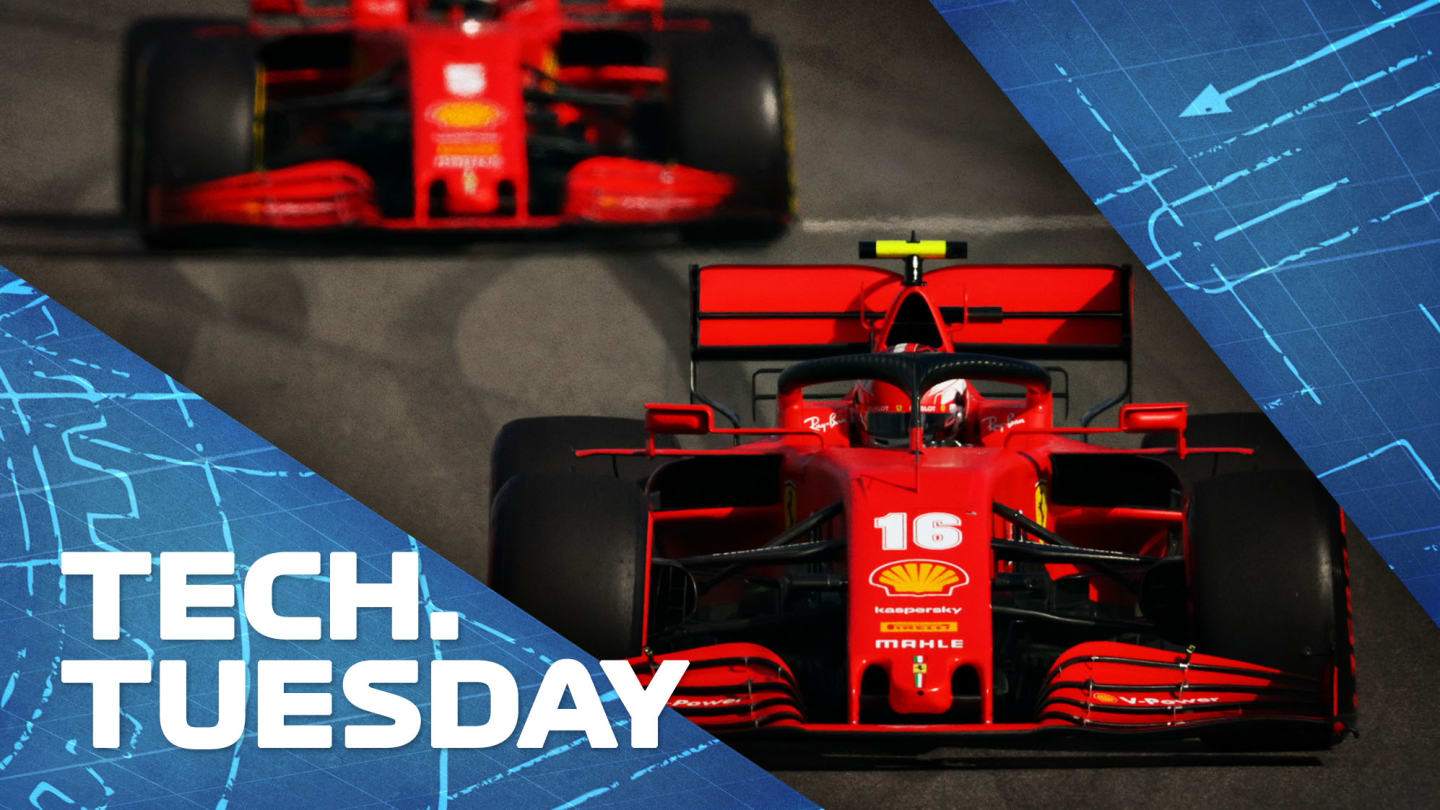
Technical
What did we learn from the Eifel GP about ‘phase two’ of Ferrari’s upgrade package?

Share

Ferrari have been on the back foot all season long with their SF1000 car, but the team brought an upgrade package to the Russian Grand Prix and then another batch of updates to the Nurburgring. In this week's Tech Tuesday, Mark Hughes examines the latest tweaks the Scuderia have made to their car, with technical illustrations from Giorgio Piola.
Ferrari continue to refine the aerodynamics of their SF1000 but within the constraints of its existing philosophy, based around the unfashionable inboard-loaded front wing/wide nose combination which tends to work better in fast corners than slow, as explained here.
READ MORE: 'Disaster' first stint compromised my Eifel Grand Prix says Ferrari's Leclerc
The first part of the rolling upgrade package was introduced at Sochi. The second came at the Nurburgring where a heavily revised barge board was added to the first batch of changes. A subtle reprofiling of the front wing was not part of the upgrade but just an adjustment for the high-downforce nature of the circuit. The third part of the package is expected to be a new diffuser, set for introduction at the next race in Portimao.
The comparison between the old and new barge boards can be seen in the image gallery below. The leading turning vane (1) has been rotated to a different alignment. The boomerang section (2) transitions differently (3) into the upright vane (4) further back and the mini-vanes (5) at the leading edge of the outer floor are more intricate (the numbers refer to the second image in the gallery).
1 / 2
These changes marry up with those made further forward within the car, introduced at Sochi. These were the extra array of mini vanes on the external footplate of the first arrangement of turning vanes.
READ MORE: How effective were Ferrari’s Russian GP updates?
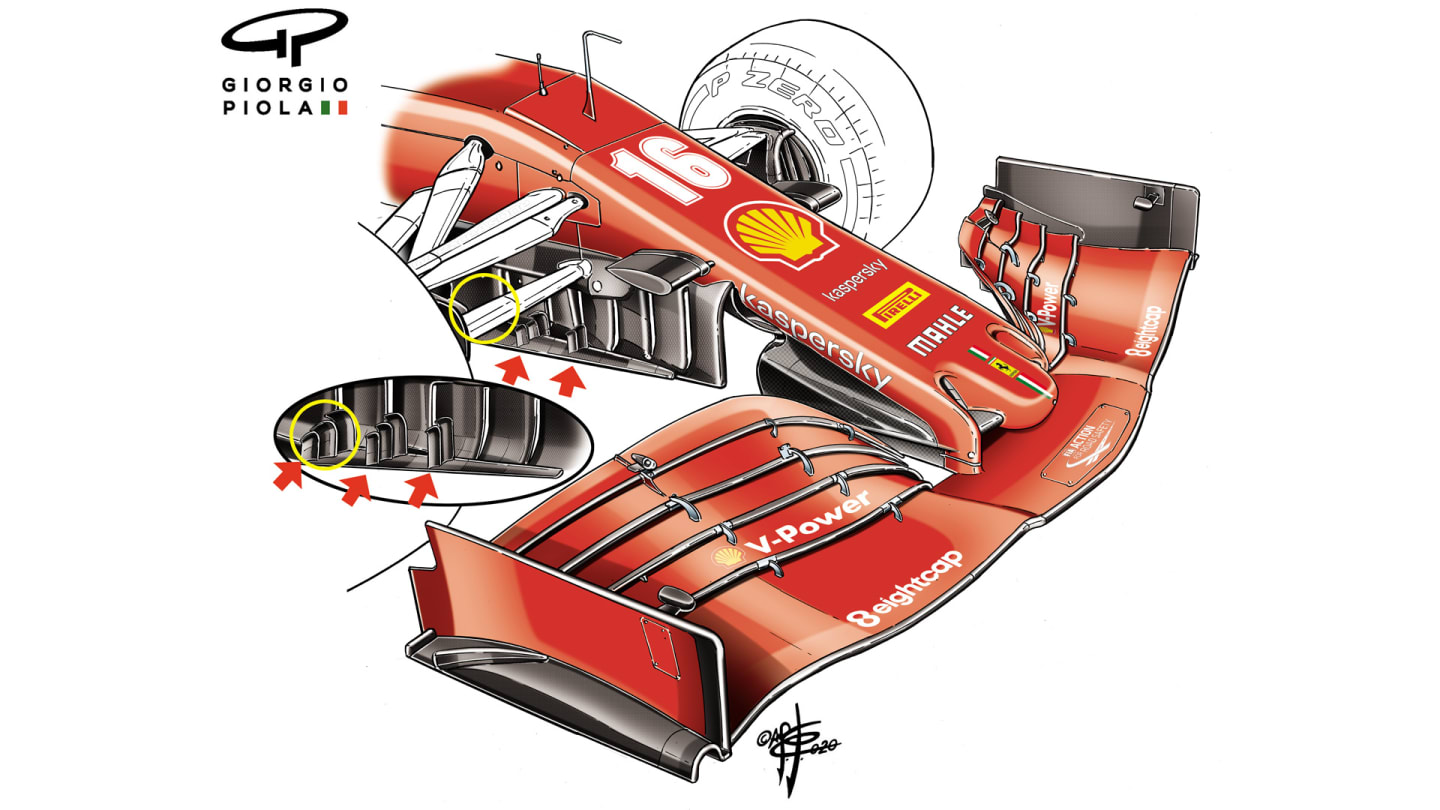
The extra mini-vanes on the front wing, as introduced at Sochi
All of these changes, in enhancing the airflow volume to the underbody, are seeking to increase the effectiveness of the underfloor in creating downforce, thereby allowing a more efficient aerodynamic performance (as measured by the downforce:drag ratio), the importance of which has been intensified since Ferrari suffered power losses to the pre-season technical directives.
The new diffuser – working in conjunction with the new rear wing endplate introduced in Sochi – should increase the speed of the enhanced volume of air now being fed to the floor.
The wide nose concept is capable of creating more downforce from the underside of the nose itself than the more fashionable slim nose seen on the Mercedes, Red Bull and Renault.
READ MORE: Why Ferrari have bucked the trend with their 'odd one out' nose concept
But it is also more prone to stall at low speeds and forms more of a blockage in turning the airflow outwards to be conditioned by the barge boards. Hence the extra array of mini fins and incredibly intricate fashioning of the various vanes. The turning of that airflow cannot begin as early with the wide nose as the narrow one.
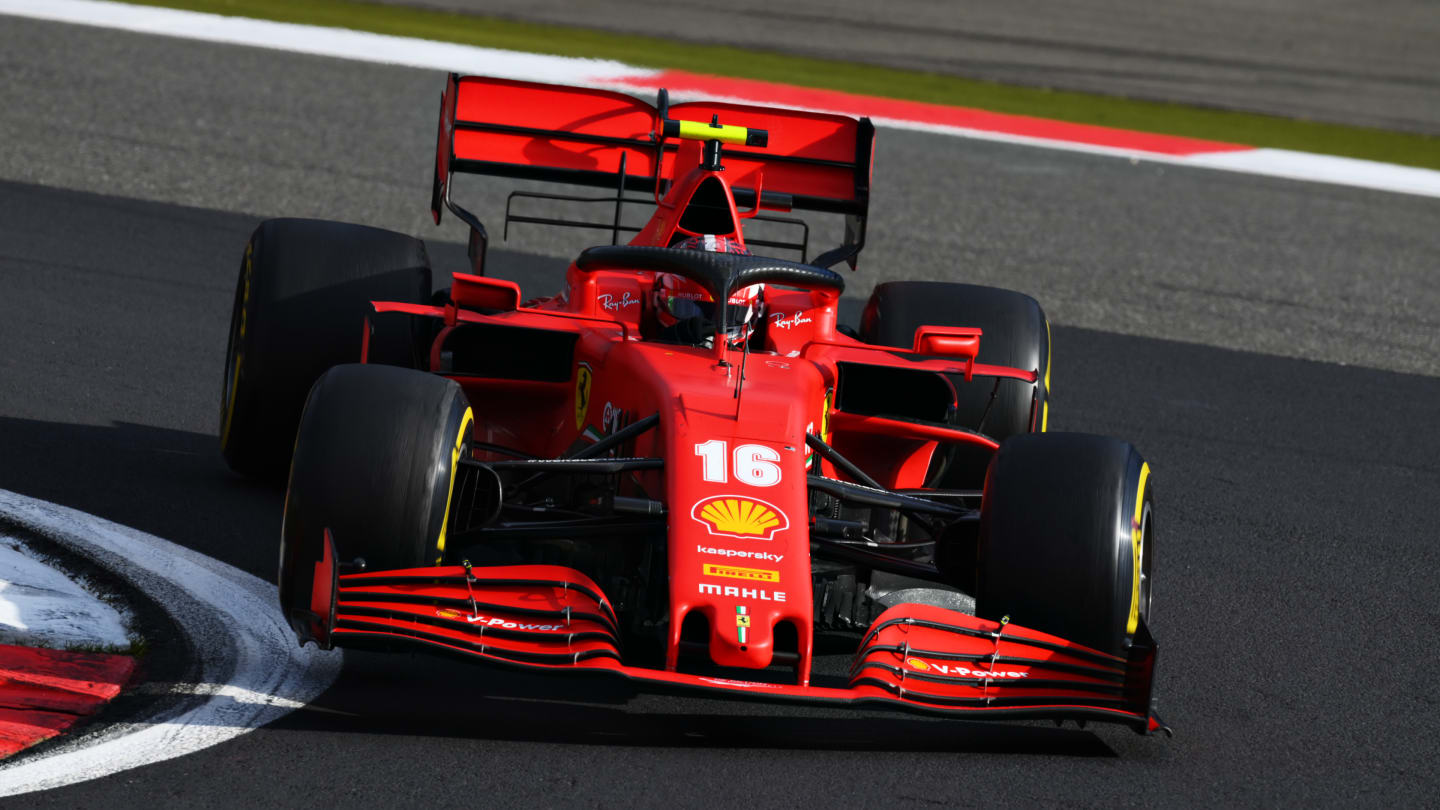
Leclerc took advantage of the new upgrades to qualify fourth, though he slipped back to seventh in the race
Charles Leclerc qualified the updated car well in fourth place but faded in the race as the soft compound front tyres didn’t reach the optimum temperature and grained very badly. He felt the updates were “a small step in the right direction – which is all we were searching for.”
“Yes, we were not expecting a lot of difference from these changes in isolation,” reiterated Team Principal Mattia Binotto.
“But it was positive in that they confirmed what we saw in the tunnel. There are further updates in the coming races, so it was important here to know we are going in the right direction before the next new parts are ready.”
READ MORE: Who were the Winners and Losers of the 2020 Eifel Grand Prix?
More Tech Tuesdays
- A close look at the ‘experimental’ new nose McLaren tested at Mugello
- F1’s latest race-winning car is AlphaTauri's AT01 – but how similar is it to the 2019 Red Bull?
- A look at the W11 upgrades that show how hard Mercedes are pushing to stay ahead
- What does the 2021 aero rules change mean for the cars – and which teams will it hurt most?
- The Mugello updates that show Racing Point's RP20 is moving away from its Mercedes W10 inspiration
YOU MIGHT ALSO LIKE
News Hadjar declares points run in Spain ‘a lot of fun’ as Racing Bulls team mate Lawson reflects on factor that ‘screwed’ him
News Santander launch global free education campaign inspired by Formula 1

Video HIGHLIGHTS: Watch the action from the Spanish GP as Piastri wins while Verstappen and Russell collide
News ‘It is what it is’ says a dejected Tsunoda as he fails to score for second race in a row

